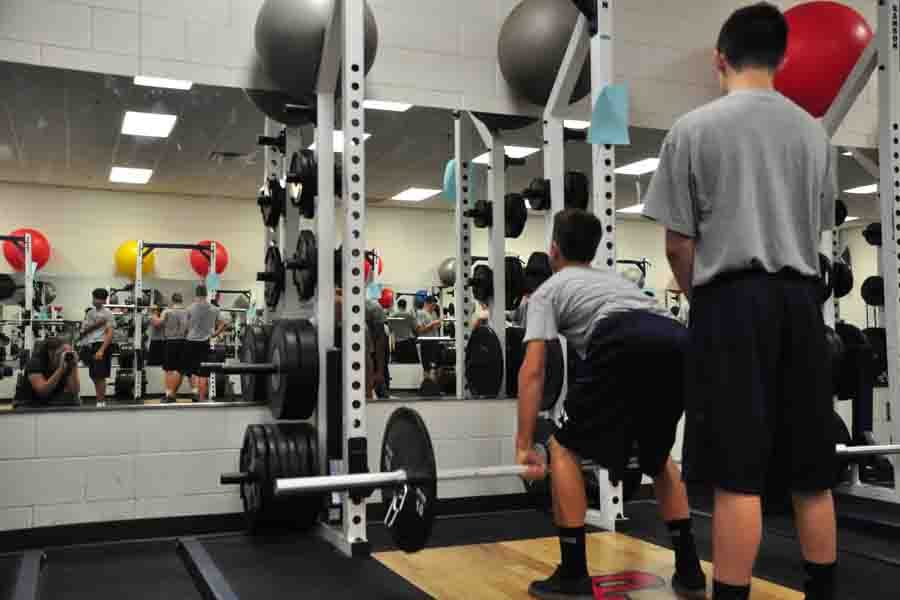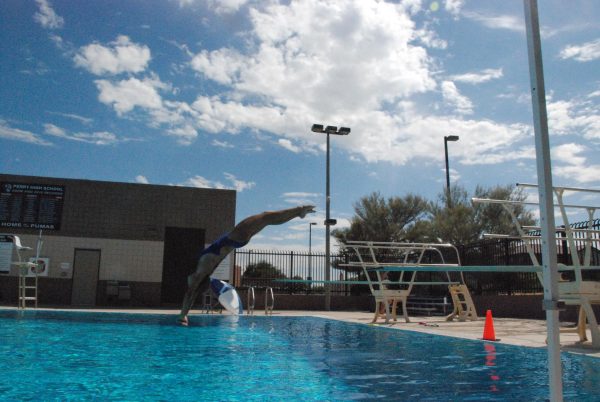State’s new rule opens revolving door of transfers
Ariz. schools see huge spike in transferring student-athletes
Football Players weightlifting in preparation for the competition
Transferring schools as a student-athlete has always been risky business. Those who transfer must weigh competing on a new team against the prospect of being banished to the sideline for a full season.
For decades, the Arizona Interscholastic Association’s bylaws stated that students who transferred schools had would be ineligible for an entire season. That rule deterred students from transferring, for the most part. If a student wanted to participate in athletics at a new school, they had to prove that they moved into the school’s boundaries. That meant athletic directors and the AIA had to play detective, as well as spend hours in hearings to prove that the student’s transfer was legitimate.
Last March the AIA unveiled their new policy, which states that students which reduces the ineligible period from a full season to only 50 percent of a season, and says it does not matter where the student lives.
“I think there’s going to be more transfers and I have seen it already,” principal Dan Serrano said.
Although the new policy is not groundbreaking nationally (Ohio and California have similar policies), the numbers do not lie.
According to the AIA, 171 students transferred across the state in 2015-16 with the old rule in place.
This quarter alone, 138 have already swapped schools throughout the Arizona, 27 of which have moved to PHS (figures as of Sept. 16). Last year, 59 students transferred all year, meaning that PHS has already seen a spike in transferring athletes.
The numbers don’t lie — the new rule has spiked transfers throughout the state, and Chandler Unified School District athletic director Marcus Williams has noticed.
“The bylaw won’t deter transfers,” he said, “as students now can transfer without moving and still be eligible 50% of the season on their 1st transfer.”
What the policy has reduced is the hardship appeals the AIA must hear, which take a lot of time and money.
Hardships are in place to give students whose original schools lacked the funding, competition, or existence of desired programs a new option at high school athletics, but hardships have to meet certain requirements.
Williams categorized these requirements as the three U’s: unforeseeable, unavoidable, uncorrectable.
“In other words,” he said, “a ‘life-changing event’ has to occur for students to win a hardship appeal.”
Recent appeals are not met with the same type tolerance as in years past. Of the total appeals last year, 48 percent were granted. So far this year, only 20 percent have been approved. According to athletic director Jennifer Burks, PHS has already had two appeals heard and approved this year.
Many critics of the new policy say this opens the floodgates for recruiting, which is illegal, according to the AIA.
Head soccer coach John Roberts said recruiting “is already happening and [the AIA] has given us a license to make it more prevalent.”
There is no way to track if student athletes have been recruited to transfer, but the spiked numbers could be a sign of schools breaking the rules.
Said Williams: “Recruitment should never happen and is always on the table in regard to the bylaw.”
Head football coach Preston Jones said only time will tell if the rule will help keep teens at their true high school
“I can’t guess what is going to work or not work yet,” he said. “I hope it keeps people from [transferring] as frequently as it’s been happening.”
For better or worse transfers are no longer a question of if they occur, but when they arrive.
“ I have seen transfers in the junior class. We had a couple soccer players transfer over to Chandler, and I have seen Hamilton players coming over to Perry as well,” said senior soccer player Alex O’dell.
“I had been thinking about transferring to Perry for a while for volleyball, and having to sit out the whole year would have been rough,” said volleyball player Alexis Ke, “but after they changed it, I would only have to sit out half.”
Noticeable change aside, the growing consensus is that of uncertainty, as would be expected in the immediate wake of a drastic change.
“[Transfer changes] could create a little more chaos within our athletic system but there’s a reason why they made the rules,” Roberts said.
Serrano is also weary of the changes.
“I have my doubts,” Serrano said. “I do not think you can ever control transfers.”
Taking into account an already overpopulated campus, transfers threaten to burst a strained problem.
Kalista Rankins is a senior at Perry High School and this is her first year with the Precedent. She enjoys videography, especially the editing aspect and...






